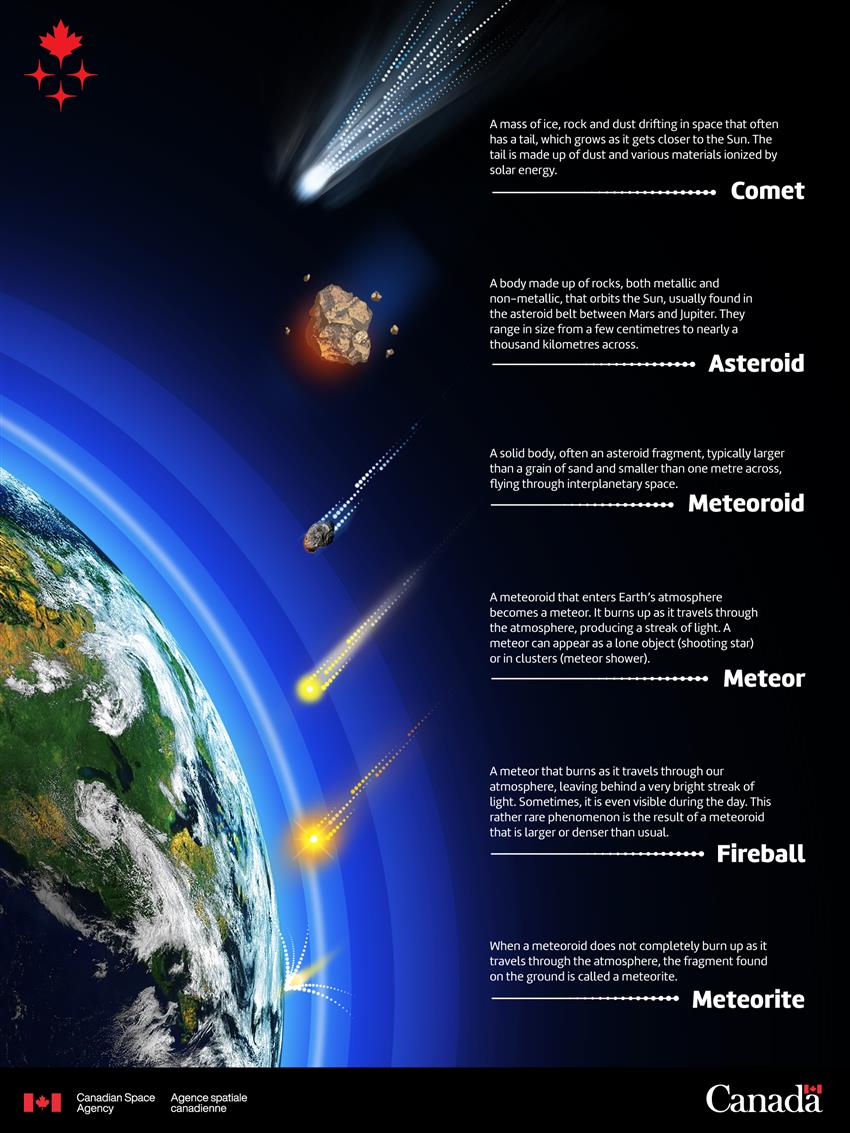Comets and asteroids
Our Sun and the planets formed about 4.5 billion years ago from a cloud of gas and dust in the early solar system. But not all the material ended up being part of planets; in fact, the leftovers can still be found throughout our solar system. Some of these celestial objects are large enough to be considered dwarf planets. Smaller bodies, often irregular in shape, are called comets and asteroids.

A view of Comet 67P/Churyumov–Gerasimenko taken in by the Rosetta spacecraft. (Credit: ESA/Rosetta/NavCam)
What is the difference between an asteroid and a comet?
Although comets and asteroids can be similar in size, they are made of very different materials and are found in distinct parts of the solar system.
Comets are like dirty cosmic snowballs; they are made up of ice, frozen gases, rock and dust, and generally range from a few hundred metres in diameter to tens of kilometres wide. Comets are most often found in the outer solar system, far away from the Sun, where they remain frozen and difficult to observe. However, their elliptical orbits occasionally bring them close to the Sun, causing their ice and frozen gases to vaporize and form tails behind them. This effect makes comets much easier to spot from Earth.
Asteroids, a type of minor planet, contain a lot of the same elements as the solar system's rocky planets, including carbon and metals. Their sizes can vary – many are less than 10 metres wide, but the largest asteroid ever detected, Vesta, is 530 kilometres wide. Most are found in the asteroid belt between the orbits of Mars and Jupiter. Although the belt contains millions of asteroids, its total mass is thought to be much less than that of Earth's Moon.
While many comets are quite different from asteroids, scientists are finding more objects in the solar system that have some traits of both. For example, Manx comets have comet-like orbits, but they do not have tails and are composed of rocky material like asteroids.
Although asteroids and comets have collided with all of the planets in our solar system, including Earth, large impacts are quite rare. When they do happen, these cosmic events can not only change a planet's landscape – they can even cause mass extinctions. (Credit: Canadian Space Agency)
Cosmic time capsules
Comets and asteroids hold clues about the birth of our solar system. Since they didn't grow large enough to become planets themselves, they have remained mostly unchanged since their formation.
Scientists study what comets and asteroids are made of to learn about the molecules that existed billions of years ago. Some of them even believe that the building blocks of life on Earth may have been brought here by comets and asteroids.
Several spacecraft have been sent to explore and study these worlds in more detail, including NASA's OSIRIS-REx mission, set to return a sample from asteroid Bennu in . Data from Canadian instrument OLA was used to create a high-resolution 3D map of Bennu's surface, which enabled scientists to select a sample site. Canada will receive a portion of the asteroid material for our scientists to study.

Text version - Comet, meteor or meteorite? Illustration
Illustration providing an overview of the characteristics of comets, asteroids, meteoroids, meteors, fireballs and meteorites. (Credit: Canadian Space Agency)
Despite their name, shooting stars are actually caused by material – ranging from tiny grains of space dust to baseball-sized asteroids – burning up brightly as it enters Earth's atmosphere. Peak times to observe hundreds of shooting stars, known as meteor showers, happen at the same time every year because concentrated dust clouds are found along the orbits of specific comets and asteroids. During the Perseids in August, Earth passes through the dust cloud of the Swift–Tuttle comet, and dozens of shooting stars per hour are visible in the summer night sky.
